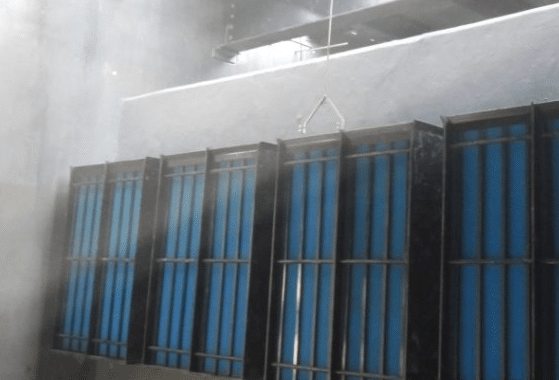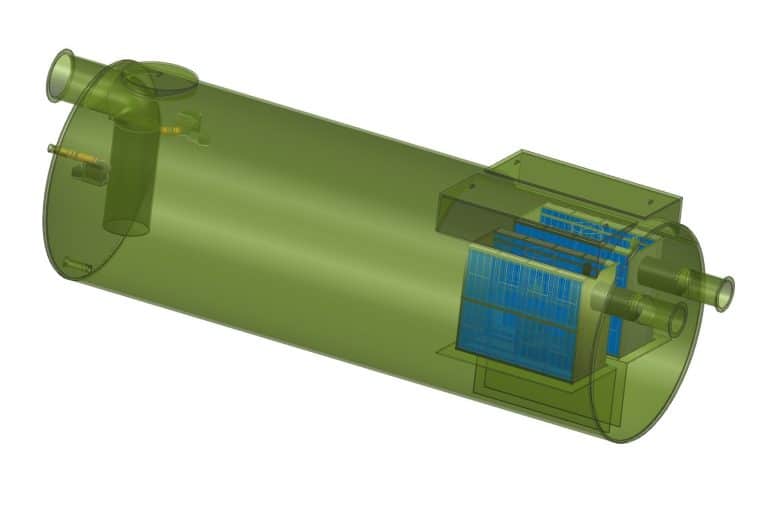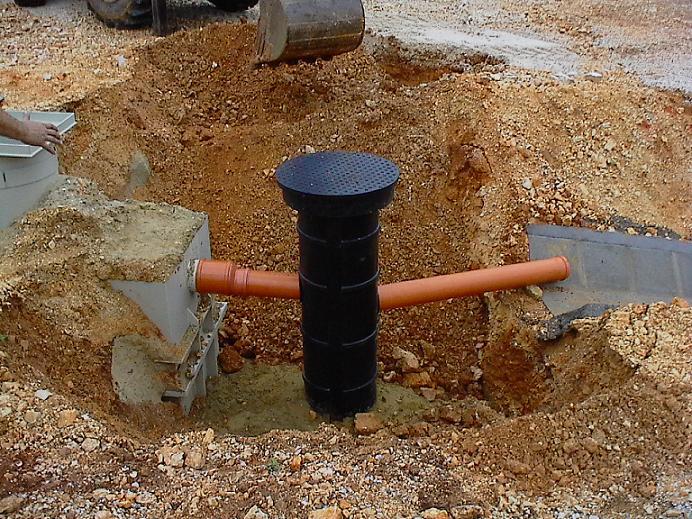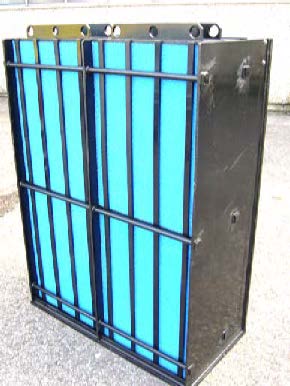Ever thought about how long systems that clean our water can last? Or if they might become outdated? Knowing how long a below ground oil water separator (OWS) lasts is key for industries that rely on them. These systems are vital for managing wastewater.
The life of an underground OWS depends on its quality and how well it’s installed. It also depends on the environment and how well it’s maintained. While many can last 15 to 20 years, keeping them in good shape can make them last even longer. New technologies, like those from Freytech Inc., have made these systems more efficient and longer-lasting.
So, how long does a below ground OWS last? Let’s dive into the details.
Key Takeaways
- The lifespan of below ground oil water separators typically ranges from 15 to 20 years.
- Factors such as installation quality, environmental conditions, and maintenance significantly impact underground OWS durability.
- Freytech Inc. offers cutting-edge solutions that enhance the effectiveness and longevity of OWS systems.
- Regular inspections and upkeep can noticeably extend the lifespan of these separators.
- Understanding the key components of OWS can help businesses optimize their wastewater management strategies.
Understanding Below Ground Oil Water Separators
Below ground oil water separators (OWS) are key in managing oily wastewater. They make sure wastewater is treated well to protect our waterways. These systems separate oils and other contaminants from water, which is vital for industries with a lot of wastewater.
What is a Below Ground OWS?
A below ground oil water separator is a tank underground that removes oils from wastewater. It has different parts to separate oil from water. This way, clean water can be released, reducing harm to the environment.
Keeping these systems in good shape can greatly reduce the amount of oil in wastewater. This can cut oil content by over 80%, helping to keep our waterways cleaner.
Key Components of OWS
The success of a below ground oil water separator depends on its parts. It has an inlet for wastewater, a sludge chamber for heavy particles, an oil separation chamber, and a clean water outlet. Regular checks on these parts, like waste oil containers and coalescing plates, help it work better and avoid leaks.
Common Applications
Oil water separators are used in many fields, like car repair, industrial making, and managing stormwater in cities. For example, car service shops use them to treat wastewater from car services. Using these separators well can mean less often needing to clean out sludge and lower costs.
This can also help save money and avoid fines for not following discharge rules. It’s a win-win for both the environment and the bottom line.
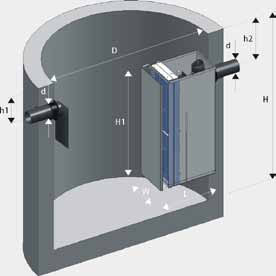
Lifespan of Below Ground OWS
The lifespan of below ground oil water separators (OWS) varies a lot. It depends on several factors. These include the material used, how well it’s installed, and the types of contaminants it handles.
Factors Affecting Lifespan
Environmental conditions and how it’s installed play big roles in its lifespan. Concrete tanks are very tough and can handle harsh weather. Fiberglass tanks are more durable than polyethylene ones, but cost more.
Regular checks and a good maintenance schedule are key. Look for leaks, damage, and buildup in the solids chamber. This helps catch problems early.
Maintenance and Upkeep
Keeping your OWS well-maintained is vital. Clean the coalescing media regularly and check for blockages. This helps avoid bigger issues.
Annual inspections are a must. They help spot problems early and keep the tank working well.
Typical Lifespan Expectations
With proper care, OWS can last 15 to 20 years. This meets industry standards. It shows the value of regular maintenance and quick fixes.
By following these tips, businesses can keep their OWS systems reliable and effective for a long time.
Freytech Inc. and OWS Solutions
Freytech Inc. is a top name in oil water separators, using advanced coalescing systems. They focus on quality, making their products efficient. These separators help separate oil from water, meeting environmental and legal standards.
Overview of Freytech Inc.
Freytech Inc. is based in Quebec and makes Above Ground Oil Water Separators. These systems meet the CAN/ULC-S656 standard. They can remove oil droplets to less than 5 PPM, even when the water has 2000 PPM oil.
They serve many industries, from mining to food processing. Freytech’s solutions fit the needs of different businesses.
Freytech’s Enhanced Coalescing Technology
Freytech’s technology makes oil droplets stick together better. This boosts their buoyancy, leading to better separation. Some models can get the water so clean that it’s under 0.1 PPM, meeting strict standards.
Advantages of Choosing Freytech
Choosing Freytech OWS systems has many benefits. These units are reliable and efficient, handling oil with specific gravity between 0.82 and 0.88. They work well for all sizes of operations, from small workshops to big industrial sites.
Businesses can save money and follow environmental rules better. They can also make money by managing pollution well.
Compliance with Discharge Regulations
Meeting regulatory standards for oil water separators is key in many industries, mainly in North America. Hydrocarbon discharge limits say that oil in water must be under 15 parts per million (PPM). This rule helps protect the environment and follows marine laws.
North American Hydrocarbon Discharge Limits
In North America, rules on hydrocarbon discharge are strict. Vessels over 400 gross tonnage often need oil water separators. MARPOL Annex I makes it clear that ships can’t discharge oily waste in the Antarctic. Keeping to these rules is essential for a ship’s legal status.
Separation Efficiency Explained
How well a system separates oil from water is very important. Systems like those from Freytech can get the output under 5 PPM. There are many technologies, like centrifugal and membrane filters, each with its own efficiency level. Keeping these systems in good shape and monitoring them closely helps avoid breaking the rules.
Importance of Meeting Compliance
Following oil water separator rules is more than just following the law. Not meeting hydrocarbon discharge limits can lead to big fines and harm to the environment. Regular checks and maintenance, along with modern monitoring tools, help avoid problems. Solutions like Freytech’s offerings make sure you’re not only following the rules but also running efficiently. This is important for keeping water management practices sustainable over time.
Features of Freytech OWS Packages
Freytech OWS packages bring new tech to oil water separation. They focus on top performance. Their design uses special coalescing media for better oil and water separation.
This makes them great for places like car washes and mechanical shops.
Enhanced Coalescing Media
Freytech’s coalescing media is better at removing oil than old systems. It’s made for top performance. This tech increases oil coalescing area, leading to better separation rates.
It can even beat industry standards. This is key for meeting discharge rules.
Patented Oil Skimmer Benefits
Freytech’s oil skimmer is a game-changer. It pulls out oil with 99.7% purity. This is a big plus for their oil water separators.
It keeps oil levels low, meeting environmental standards. This means a cleaner discharge for operators.
Reusability and Sustainability
Freytech cares about the environment in their OWS designs. Their systems are made to be reused. This cuts down on waste and saves money.
It’s good for the planet and makes the separators last longer. It shows Freytech’s dedication to eco-friendly oil-water separation.
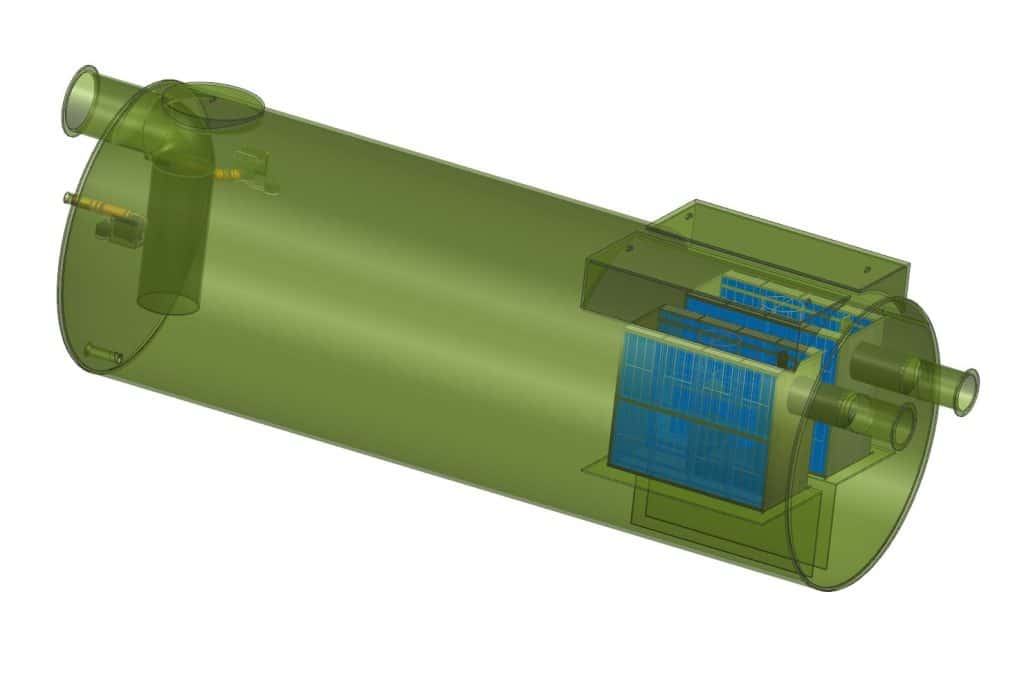
Efficiency of Oil Separation
The success of oil water separators (OWS) depends on how well they separate oil. Knowing the difference between free oil and emulsified oil helps a lot. Free oil is easier to separate because of its structure. But, emulsified oils are harder to deal with.
Using advanced coalescing technologies is key for good oil separation. This is true, even when aiming for very low PPM levels.
Free Oil vs. Emulsified Oil
Free oil is easier to separate from water than emulsified oil. This is important for OWS systems. They can handle more oil if they separate free oil well.
Emulsified oils, though, need special methods to break down. If not done right, it can slow down efficiency.
Achieving Low PPM Separation Metrics
Keeping PPM levels low is a must for meeting discharge rules. The goal is to have oil content under 15 ppm. This ensures the water meets discharge standards.
Using Oil Content Monitors helps make adjustments in real time. This boosts oil separation efficiency.
Enhancing Discharge Quality
To improve discharge quality, managing oil in wastewater is key. Advanced technologies and understanding oil separation help a lot. This way, facilities can make water cleaner.
This effort helps protect waterways. It meets both environmental rules and corporate goals.
Cost-Effectiveness in Oil Recovery
OWS is key for industries looking for green ways to get oil back. It makes used oil valuable, saving money in the process. OWS systems help turn waste into something worth money.
Value of Efficiently Skimmed Used Oil
Using top-notch oil separation tech lets companies reuse valuable materials. This makes the used oil better, opening up more recycling chances. More people see the benefits of getting energy back and cutting down waste.
Recycling Costs and Benefits
Oil water separators bring big recycling wins, thanks to low clean-up costs. Companies save on disposal fees and help the planet. They also meet rules on water waste better, saving money and avoiding fines.
Long-Term Financial Savings
Companies focusing on OWS savings see big changes. They spend less on waste, get more resources, and avoid fines. This makes investing in systems like Freytech’s a smart move.
Maintenance Best Practices
Regular upkeep is key for oil water separators (OWS) to work well. Following OWS maintenance best practices keeps systems running smoothly. It’s important for facilities to have a set maintenance schedule.
Routine Inspections
Regular checks on OWS are vital to catch problems early. These inspections help see if the separator is in good shape. They also check for blockages in the system.
Doing these inspections on time keeps the system working right. It also helps follow environmental rules and makes the system last longer.
Cleaning and Reusing Coalescing Media
Cleaning coalescing media is important for keeping the system efficient. Regular cleaning stops clogs and makes sure oil droplets can rise to the top. Using the media again saves money and is good for the environment.
Troubleshooting Common Issues
Being ready to fix oil water separators is important. Problems like sediment buildup or flow issues need quick action. Knowing how to solve these problems helps avoid downtime and keeps the system in line with rules.
Contact Freytech Inc.
Looking for solutions for oil water separation? Contact Freytech Inc. for expert advice on OWS. Their team is ready to help with any questions about their advanced oil water separator systems. They’ll make sure you find the perfect fit for your needs and regulations.
Get in Touch for Expert Consultation
Want to talk to Freytech Inc.? Call them at +1 (305) 372-1104. You can also email them or visit their website. They’re ready to help with your specific needs and provide an OWS quote.
Phone and Email Information
It’s simple to get in touch with Freytech. Just call the number or use their website’s contact form. They’ll offer advice and insights to improve your oil water separator strategy. They ensure you meet local and federal regulations, including North Carolina’s strict standards.
Request a Quote for Your OWS Needs
Freytech Inc. offers custom oil water separator tanks. They cater to car washes, industrial areas, and maintenance facilities. Don’t wait to ask for a quote. With options from 1,000 to 20,000 gallons, they have the right solution for you.


